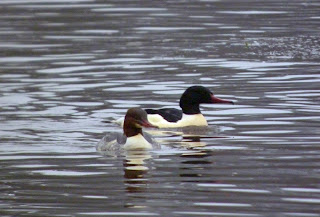The Shore Lark is another migrant to our shores in the winter months. They normally arrive in October and November having flown through Sweden, Denmark and Germany and then crossing the North Sea, which is why they are mostly seen in East Anglia. They make the return trip in March.
In Britain they are normally found by the coast, often feeding along the strand line, or on grazing marsh, dunes or stubble fields that are close to the sea. They breed in mountains above the tree line and on Arctic tundra, although a pair nested in Britain in 1977.
The Shore Lark is also known as the Horned Lark because the male has two small `horns` on top of the crown when in breeding plumage. They are a specially protected species, ensuring full protection if there are further attempts to nest in Britain.


All digiscoped using Lumix FS15 and Kowa TSN-883 x30
And now, another short break in proceedings to announce that another award has been bestowed upon my humble blog. This is `The Stylish Blogger` award and has been given by my friend
The Mask, for which I am very grateful.
Now the conditions of this award is to tell you 5 of my favourite things and then to pass it on to others, so here goes;
1. My most favourite thing is being married to Lisa (pass the bucket). I know this is corny, but it`s true.
2. My family, all members, both young and old!
3. Obviously, birds (of the feathered variety). Not just birds, but all nature, both pretty and ugly and all that lies in between.
4. The first shoots of Spring and the first frost of Autumn.
5. Having won `The Ashes` in Australia!
Now to pass it on;
1. Gary at
klahanie for being truly stylish.
4. Rebecca at
The Snee for also being stylish
and finally,
There all done and dusted!

 Digiscoped using Lumix FS15 and Kowa TSN-883 x30
Digiscoped using Lumix FS15 and Kowa TSN-883 x30





















